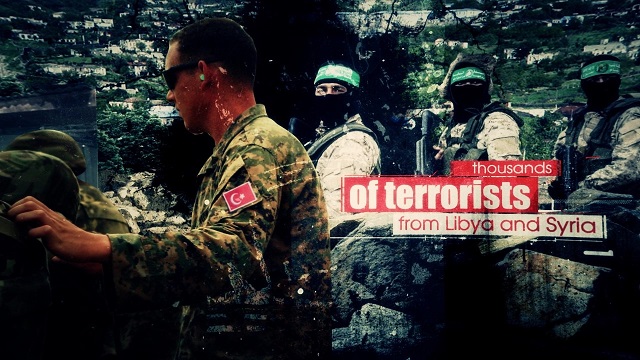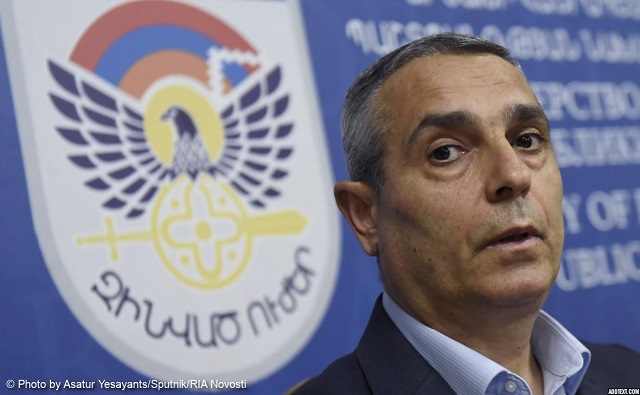Viktorya Muradyan
Alumnus of the forth Democracy School of
the Armenian Institute of International and Security Affairs
Leadership Academy Programme
Read also
’ Terrorism will spill over if you don’t speak up’’, said a Pakistani activist for female education and the youngest-ever Nobel Prize laureate Malala Yousafzai. Brussels and Paris, and now the USA became a vivid example of how dangerous threat the terrorism has become. According to US Department of State more than 13.000 terrorist attacks were recognized in 2014 with more than 30.000 fatalities. The countries which struggle the most are Iraq, Afghanistan and Pakistan together with more than 16.000 fatalities, which is the half of total number. The world has become united against this terrific phenomenon and more than ever is decisive to take actions. The main tracked history of terrorism begins in 1880s with the appearance of first wing of terrorist called anarchists. In 1920s the anti-colonial wave took the lead and then was replaced by new left wave and then by religious wave in 1979. Though, we still don’t have one agreed upon definition about terrorism. Why is it so?
First, terrorism is a ‘’contested concept’’, meaning that one man’s terrorist is another man’s freedom fighter. As a vivid example we can take Abdullah Öcalan and Yasser Arafat. Yasser Arafat was a chairman of Palestinian Liberal Organization, which was considered by the United States and Israel to be a terrorist organization until the Madrid Conference in 1991. In the meantime, Yasser Arafat is a Nobel Peace Prize winner in 1994 for his efforts to create peace in the Middle East. Abdullah Öcalan, founder of Kurdistan Workers’ Party (PKK), which is considered as a terrorist organization by US Department of State, is regarded by millions of Kurds as their political representative, and has become the key figure in their struggle for cultural rights and democracy. Another obstacle for defining terrorism is that it has changed a lot in more than 200 years of its existence and continues to evolve. Many different types have appeared; new methods and tools were used so the world was always surprised by something new and unexpected.
Though, there are some key concept and principles, that haven’t changed throughout decades. First, terrorists want to spread high levels of fear and not death. This concept was first offered by Brian Jenkins in 1975. They don’t target at those who die but at those who live. With the appearance of media an irreplaceable opportunity was created for them to declare loudly about their deeds, to spread fear and make everyone believe that they can easily be the next. The attacks in Brussels and Paris were brave announcements that even the most powerful and secure Europe can be destroyed in one minute and EU citizens are vulnerable as never.
It is fair to admit that we give them a lot of power when we represent terrorism as in issue that can’t be handled and spread fear and uncertainty. Some people are sure, that terrorism is becoming more anti-western, more lethal and more successful. Are this statements true or maybe they are the results of fear and despair? We will try to look at some academic, empiric and historical evidence to understand better the evolution and the reality of terrorism.
Myth 1: Terrorism has become more anti-western
First of all let me differentiate two main sides of this statement.
- Are victims and targets mainly from West?
- Is the propaganda used by the terrorists anti-western?
Why it is so important? Firstly, the terrorism then becomes a struggle between Christianity and Islam. Secondly, if we proof that terrorism is targeted at West, counterterrorism measures can become more focused and as a result, more effective.
“The priority in this war at this stage must be against the infidels, the Americans and the Jews who have not stopped their injustice,” declared Bin Laden, which seems to be a direct threat and ultimatum for the West. Let’s start to look at some facts.
Global terrorism index 2015 states that ‘’78% of all deaths and 57% of all attacks occurred in just five countries: Afghanistan, Iraq, Nigeria, Pakistan and Syria’’ which apparently are not western. On the other hand, more than 55% of total 152 terrorist attacks in EU in 2013, are inspired by nationalists and separatists. Moreover, less than 2% of all terrorist attacks in the EU were “religiously motivated” from 2009 to 2013. So we can surely say that even if the propaganda is mainly anti-western, even if terrorist continue to claim that their main enemies are Europe and the US, the numbers show that yet Middle East has the biggest losses.
Finally, we can say that this statement may only be partly true.
Myth 2: Terrorism has become more lethal
Once again, let’s look at this statement from 2 different points of view.
- Has the number of fatalities increased?
- Has the number of fatalities per attack increased?
Where is the origin of this thought? Firstly, we can’t deny that the development of technology and arms made it feasible to kill a lot of people in a few seconds. Secondly, politicians’ and public figures’ speeches have become more fearful and alarming. For instance, in an interview given to Spiegel, former US Vice-president Dick Chenney said:
‘’ The biggest threat we face from a national security standpoint is still the possibility of terrorists. The next time they launch an attack against the United States, they will have deadlier weapons than they did on 9/11, a nuclear weapon or a biological agent of some kind, and the cost in lives will perhaps be hundreds of thousands’’. On the other hand, in 2006 American analyst Brian Jenkins rephrased his statement he had made in 1970s saying again that ‘’terrorists want a lot of people watching not a lot of people dead’’. So has terrorism really become more lethal?
“Background Report: 9/11, Ten Years Later” shows that after 9/11 the number of terrorist attacks in the US has drastically regressed and this is mainly due to strict regulations, updated legislation, research centers etc. But as I have mentioned earlier, terrorism is not mainly anti-western in the context of victims and targets and the situations outside US and Europe actually became worse.

After all of these, one question arises: Can terrorism be defeated? And by saying terrorism do we mean the phenomenon of terrorism or just some separate groups or individuals? As King Abdullah II of Jordan said in 2010 in the interview for CNN, “We’re never going to be able to get rid of terrorism, because there is always going to be evil in the world.” So, is terrorism really undefeatable? If it is, should we focus more on impact and fear management instead of spending a vast amount of resources on prevention?
Before answering this question let’s define what the term ‘’defeat’’ means in this context. In a publication of Seth Jones and Martin Libicki “How Terrorist Groups End” published in 2008, the authors identify 4 main reasons for defeat:
- Local police and intelligence services, which is successful in 40% of cases. This mean includes decapitation, counterterrorism legislation, secret operations and data collection by the intelligence services.
- Military force, which is successful only in 7% of cases. First of all it requires rather vast human and financial resources. Secondly, many civilians may die during military operations, which will increase the hatred of local population.
- Joining the political processes in negotiations, which were effective in 43% of 648 cases.
- Victory in the context that terrorist organizations have reached their political goals, this one was an ‘’effective’’ tool for defeat only in 10% of cases. This point is actually contributing to the idea that terrorism can be considered as successful.
In conclusion I would like to answer to the question I have asked earlier, ‘’ And by saying terrorism do we mean the phenomenon of terrorism or just some separate groups or individuals?’’. My conclusion is that the phenomenon of terrorism can never be defeated, although we may be successful in defeating certain groups, organizations or individuals.
In the end, I would like you to ask yourself a question ‘’ What is the future of terrorism? Where are we going? Is the new, fifth wave possible or it’s just creature of our imagination?’’. One thing is for sure, that we can’t actually foresee the future, but we can be reasonable and attentive now, and careful with the past. The only evidence we have is the past, victims, attacks, stories, trends and developments. So it is vital to continue going forward without forgetting and neglecting the past. Some things are absolute truths: first, is that terrorism will continue to develop and evolve, change its nature and second, it will be an inevitable part of our future. It will continue to be influenced by public policies, political and technological trends and many other factors. Hence, a holistic approach is needed to be successful in counterterrorism. This is an approach which includes both hard and soft, both repressive and preventive measures involving a wide range of instruments and actors. The war against terrorism can be won only if countries, governments, infrastructures all over the world combine their efforts and act synchronized.
“Improving Security Policy Debates in Armenia” Programme (NED)























































